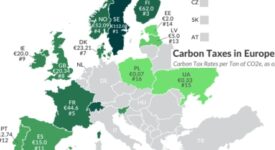In numerous armed conflicts, natural resources provide a source of funding for the involved parties. In Syria and Iraq, the so-called Islamic State (IS) gained control over oil wells and sold their production on the black market in the region. In the Democratic Republic of the Congo (DRC), armed groups ‘tax’ artisanal miners of gold and minerals and set up road blocks where transporters have to pay a fee. In Nigeria, oil companies had to pay ransom to armed groups to ensure the safety of their workers and pipelines. Such natural resources are often described as conflict resources, which have been defined by the NGO Global Witness as “natural resources whose systematic exploitation and trade in a context of conflict contribute to, benefit from, or result in the commission of serious violations of human rights, violations of international humanitarian law, or violations amounting to crimes under international law”.
Since the early 1990s, and inspired by cases of ‘blood diamonds’ from Africa, the EU has adopted policies concerning conflict resources. In the most recent major policy strategy document, the 2016 Global Strategy for the EU’s Foreign and Security Policy, a special section was devoted to the ‘political economy of peace’ to state that “to fight the criminal war economy, the EU must also modernize its policy on export control for dual-use goods, and fight the illegal trafficking of cultural goods and natural resources”. The predominant policy response to cases of conflict resources has been sanctions (or ‘restrictive measures’, as the EU calls them). A recent trend is supply chain due diligence measures that oblige importers to ensure that the natural resources they use comply with certain social and environmental minimum standards.
For the EU, the challenge lies in fitting these measures in its conflict sensitive approach to crisis situations. This means, as EuropeAid specifies for example in a handbook for staff operating in situations of conflict and fragility, that any intervention should take the context into account to make sure that it improves the situation instead of making things even worse. As the EU acknowledges in this handbook, when sanctions are not conflict sensitive, they can “potentially exacerbate conflict and instability”. But, under what conditions these undesired effects may happen?
In his work on conflict resources, Philippe LeBillon argues that there are three options for policymakers to respond to cases of conflict resources. The EU has opted almost always for the first option – it tried to make them economically worthless by sanctions or similar policies. Nonetheless, it is worth mentioning that some EU military operations used also the second option, which is neutralizing their effect by using military means to destroy them or to get them out of the hands of the armed groups. EU SOPHIA’s mandate in the Mediterranean Sea includes for example the task to “conduct surveillance activities and gather information on illegal trafficking, including information on crude oil and other illegal exports that are contrary to UNSCR 2146 (2014) and UNSCR 2362 (2017)” against Libyan armed groups. Some EU member states have also participated in the US-led air strikes campaign against IS-controlled oil installations. However, so far the EU has not proactively destroyed production sites of conflict resources as part of EU military missions.
Most of the EU’s restrictive measures against conflict sanctions are implementations of United Nations sanctions. In the age of ‘smart sanctions’, these policies rarely target the entire natural resource production of a country, but are usually focused on specific persons, companies or organizations. In some cases, the EU has also supplemented UN sanctions with or adopted completely unilateral measures. A somewhat special case is the Kimberley Process, whose import and expert scheme against ‘blood diamonds’ started in 2003. All participating states commit themselves to only import and export rough diamonds that are certified as being ‘conflict-free’. This certification scheme was a reaction to NGO reports that showed how existing UN sanctions against diamonds from Sierra Leone and Angola could easily be circumvented. The EU has played from the early days on an important role in the Kimberley Process and is represented by the European Commission as one single participant. Despite various problems, the Kimberley Process has played an important role in the area of conflict resources as it helped to establish the idea that one way to tackle the enforcement problem of sanctions is to trace back the entire supply chain of a product.
This idea is also behind the 2010 EU Timber Regulation, which makes it mandatory for all importers of timber and timber products to the European Single Market to provide evidence that the logs have been legally produced. The only fast lane is certificates from countries, which have signed a Voluntary Partnership Agreement with the EU to establish certain timber management mechanisms. For timber from other places, importers have to come up with evidence for its legal status, such as private certifications. While this regulation was primarily motivated by environmental concerns, its stipulations also refer explicitly to timber that has funded armed conflicts. Moreover, in 2017, the EU adopted the EU Conflict Minerals Regulation that stipulates that importers of gold, tin, tantalum and tungsten from conflict-affected and high risk areas must perform due diligence to avoid funding armed groups.
When discussing the merits and problems of restrictive measures, it is crucial to first think about the concrete objective of a possible policy against a conflict resource. Francesco Giumelli identifies in his book “Coercing, Constraining and Signaling: Explaining UN and EU Sanctions After the Cold War” three ‘logics of sanctions’: coercion (behavioral change on the part of targets), constraining (undermining the capabilities of targets to achieve policy objectives) or signaling (sending a message to the target or to domestic or international audiences). To that end, it is crucial to make sure which of Giumelli’s three objectives – constrains, coerce and signal – one wants to pursue when imposing measures against conflict resources.
If the aim of the restrictive measures is to constrain certain behavior or coerce actors into some behavior, it is important to be aware that even if natural resources play a relevant role in the conflict dynamics, they are usually only one variable out of many to take into account. Turning this one screw can therefore only contribute to achieving the aspired objectives if these policies are part of a comprehensive approach to a conflict. In other words, implementing such measures in isolation is not a silver bullet to end resource-fuelled conflicts and neither effective nor efficient. This is important to take into account when the EU adopts sanctions or places a country on the future Conflict Minerals Regulation’s list of high risk and conflict-affected areas. To be part of a sustainable solution, such measures have to be embedded in a broader approach to an armed conflict.
In some cases the EU may be aware of the problems to coerce actors with their policies against conflict resources or to constrain their behavior, but nevertheless it can decide to adopt these measures to signal a message. Under these conditions, the effectiveness and sustainability of the policies on the ground may be less relevant. However, in these cases the efficiency and impact becomes crucial. To spend billions of Euros to just send a message may not be the most efficient policy approach. To put the livelihood of the civil population in affected regions in peril for the sake of European ‘actorness’ is a morally questionable policy impact. In such cases, doing nothing with regards to conflict resources can be better than worsening the situation. In other words, if the EU wants to send a message it has to ensure that the delivery charges are not paid by civilians in the war-affected places.
Conclusively, policy measures against conflict resources can be a useful policy tool to mitigate or terminate armed conflicts if applied properly and as part of a broader set of measures. If applied solely, however, they are at best ineffective and, in many cases, can even harm innocents in the targeted countries.
‘First, Do No Harm: Five Questions the EU Needs to Keep in Mind for a Sensitive Approach to Conflict Resources’ – Policy Paper by Martijn Vlaskamp – Barcelona Centre for International Affairs / CIDOB.







